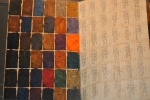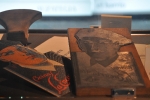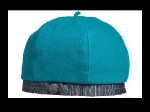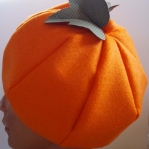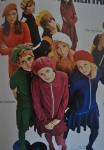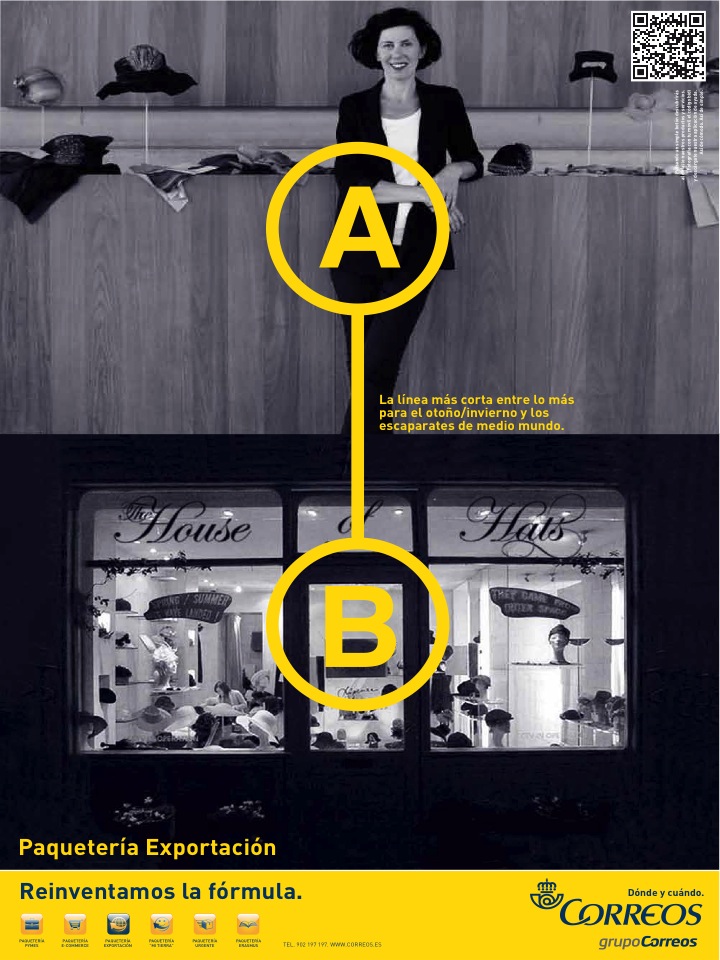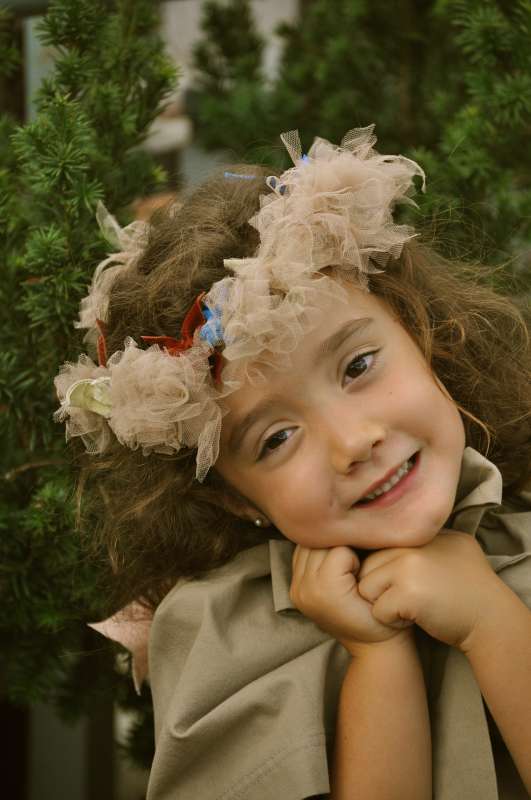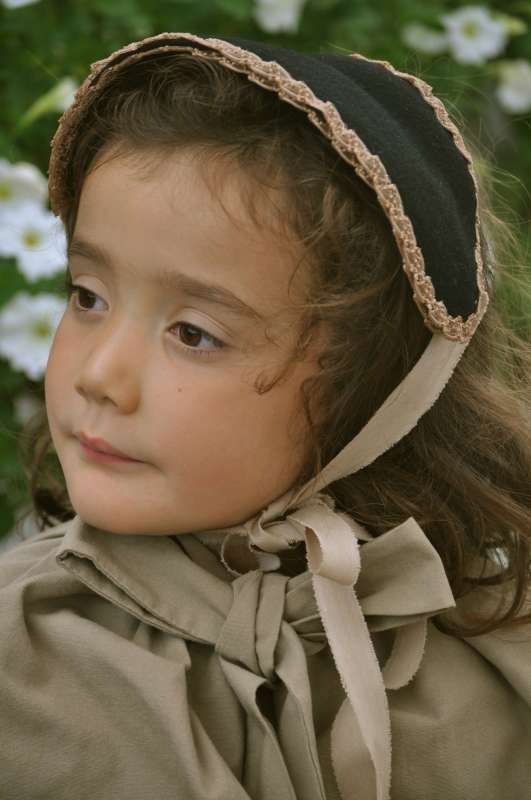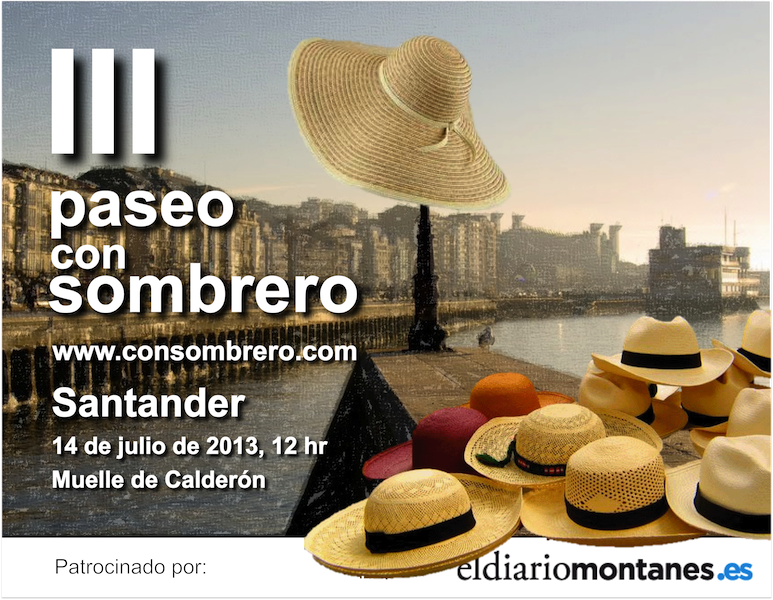
boina
Un vistazo a lo nuevo//New Comings
domingo, septiembre 4th, 2011 | Consejos, cultura del sombrero, Niños, revistas de moda, tendencias | 1 comentario
 1. Pon una boina en tu vida // Get a beret
1. Pon una boina en tu vida // Get a beret
 2. Ladea tu sombrero // Tilt your hat
2. Ladea tu sombrero // Tilt your hat
 3. ¿Y por qué sólo uno? // Why just one?
3. ¿Y por qué sólo uno? // Why just one?
Consombrero va de visita: Boinas La Encartada Museoa
viernes, septiembre 2nd, 2011 | boina, consombrero va de visita, cultura del sombrero, herramientas, historia de la sombrereria, historia del sombrero, horma, investigación, labores de sombrerería, museo, oficios, sombreros famosos, tradiciones consombrero | 4 Comments
 Hasta 1992, sí, estuvo funcionando la fábrica de boinas La Encartada de Balmaseda, pero no como podemos imaginar una fábrica textil de hoy en día, sino sorprendentemente con la maquinaria de 1892.
Hasta 1992, sí, estuvo funcionando la fábrica de boinas La Encartada de Balmaseda, pero no como podemos imaginar una fábrica textil de hoy en día, sino sorprendentemente con la maquinaria de 1892.
Es un museo, un pedazo de historia admirablemente viva, donde casi puedes oir el fatigoso ruido de las maquinas: cardadoras, hilaturas, bataneo, máquinas de coser punto…
Lo más sorprendendente, el modo de accionar las máquinas mediante poleas y cinturones, con la fuerza mecánica del río que baña el edificio.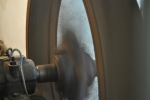
Una verdadera fábrica integral: desde el generador de energía hasta el cartonaje para embalar el producto, todo se realizaba en el mismo edificio. La base de todo el engranaje: el departamento de reparaciones.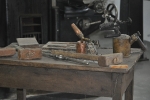
 Resumiendo el proceso: llegaba la lana cruda, se cardaba, lavaba, hilaba y entonces se procedía a coser un paño de forma circular, que luego tiene que ser batanado para que afieltre. Se pasaba por el cardo para sacar el pelo sobrante, que se cortaba; después la boina se hormaba para impedir que encogiera y ya está: ¡creada una boina!, lista para empaquetar y enviar al destinatario, que disfrutará de ella durante muchos años…
Resumiendo el proceso: llegaba la lana cruda, se cardaba, lavaba, hilaba y entonces se procedía a coser un paño de forma circular, que luego tiene que ser batanado para que afieltre. Se pasaba por el cardo para sacar el pelo sobrante, que se cortaba; después la boina se hormaba para impedir que encogiera y ya está: ¡creada una boina!, lista para empaquetar y enviar al destinatario, que disfrutará de ella durante muchos años…
The berets’ manufacturing La Encartada de Balmaseda has been working until 1992.
We can’t imagine a textile industry like that nowadays, but surprisingly it has been working with the machinery from 1892. Currently it’s a museum, an astonishing piece of alive history where you can even hear the breathless noise of its machines: carding, spinning, fulling, and knitting machines… The most surprising thing is the way machines work thanks to pulleys and straps activated with the mechanical power of falling water surrounding the building. It was a real integral manufacturing: from the energy generator to the packing process, everything was done in the same building. The wheels of this machine: the repair department. To sum up the process: natural wool came to the manufacturing, it was carded, washed, spinned and then a round cloth was sewn. This cloth was fulled to get felted. Then the carding machine removed the remaining fur that was cut. Afterwards, the beret was blocked to prevent it from shrinking and here you have, a beret! ready to be packed and sent to the addressee, who will enjoy it for many years.
Artículos relacionados:
Consombrero va de visita: sombrerería Charo Iglesias, Madrid.
Miembro honorario del Museo della Paglia e dell´Intreccio, Signa, Italia.
Visita a Hats: an anthology by Stephen Jones
Consombrero va de visita: Charo Agruña, sombrerera, Madrid.
Esto me recuerda a…
lunes, septiembre 6th, 2010 | boina, catálogo consombrero, fieltro, invierno, otoño, tendencias | 1 comentario
Boina HossIntropia otoño 2010
Boina Blanca del Piñal otoño 2008
Boina Blanca del Piñal otoño 2009
Sombrero de la semana: la boina//Hat of the week: the basque beret
jueves, marzo 11th, 2010 | boina, fieltro, historia del sombrero, película consombrero, Sombrero de la Semana | 2 Comments
 La historia de la boina está intimamente ligada a la del fieltro. Cuenta la leyenda que Noé cubrió el suelo de su arca con lana para crear un ambiente más acogedor para los animales. Con el paso de los días, el aplastamiento, la humedad, etc…la lana llegó a fieltrarse, y Noé aprovechó aquel material nuevo para confeccionar un sombrero que le protegiera de un posible nuevo diluvio…Esta anécdota les sonará puesto que ya la conté a propósito de San Clemente, patrón de los sombrereros.
La historia de la boina está intimamente ligada a la del fieltro. Cuenta la leyenda que Noé cubrió el suelo de su arca con lana para crear un ambiente más acogedor para los animales. Con el paso de los días, el aplastamiento, la humedad, etc…la lana llegó a fieltrarse, y Noé aprovechó aquel material nuevo para confeccionar un sombrero que le protegiera de un posible nuevo diluvio…Esta anécdota les sonará puesto que ya la conté a propósito de San Clemente, patrón de los sombrereros.
Leer post Santa Catalina y San Clemente
Otra historia enfoca su nacimiento en el País Vasco, donde los pastores en verano tejían los mechones de lana sobrante con grandes agujas y luego lo dejaban sobre las rocas para que se humedeciera y secara al sol. Así obtenían un material, el fieltro, que les protegía de las inclemencias del invierno. No por casualidad, en inglés, este modelo se conoce como basque berret.
Fuera como fuese, no cabe duda de que este gorro, redondo, aplanado, ajustado a la cabeza, ha sido testigo de múltiples acontecimientos históricos. Desde la boina del tradicional escocés, de los blueberries (blue berets) de la ONU, de revolucionarios, de mujeres liberadas a lo Coco Chanel o rebeldes como Faye Dunaway en Bonnie and Clyde.
Es un modelo muy agradecido, a la vez que abriga; lo considero un sombrero de entretiempo que aporta un toque casual-chic parisino muy favorecedor.
The history of the Basque beret is closely linked with the history of felt. The legend has it that Noah put wool on the Ark’s floor to create a warmer atmosphere for the animals. As time went by, the pressure and dampness on the wool transformed it into felt. Noah made the most of this new material to create a hat that would protect him from a new flood. Maybe this anecdote sounds familiar to you because I’ve told it before when speaking of St. Catherine’s and St. Clement’s Day. The other story focuses on the Basque Country, its birthplace. In summer the shepherds of this area knitted leftover tufts with big needles and then they left them on the rocks to get wet and get sun dried. In this way, they made a material, the felt, which protected him from the bad weather in winter. That’s the reason, it is known as the Basque beret in English. Be it as it may, there is no doubt that this round, flattened and tight hat has bourne witness to several historical events. From the traditional Scottish beret to the blue berets of the United Nations, the berets of revolutionaries, liberated women like Coco Chanel or rebels like Faye Dunaway in Bonnie and Clyde. It is both a fashionable and a useful design (it keeps you warm in winter). In my opinion, it is a lightweight hat and, at the same time, it gives you a Parisian casual-chic air, which is very becoming.
Artículos relacionados:
Sombrero de la semana 47:boina infantil
III Paseo Con Sombrero
Síguenos en FACEBOOK
INFO PASEO CON SOMBRERO EN SANTANDER
Hablan del II ENCUENTRO CONSOMBRERO
CORREOS CON SOMBRERO
Para saber más
Miss Sombreros
Search
¡No pierdas tu gorro!
DATOS DE CONTACTO
En Consombrero hablamos de…
Archivo
Además de Sombreros…
Hablan de consombrero en…
Charlando de Sombreros y Tocados
Entrevista RNE 3-julio-2012
Amigos Consombrero
- Backstage RNE
- bellaMumma
- Compritas Para los Peques
- Copper Kettles and Woolen Mittens
- Cristian Fernandez Photographer
- El Mueble
- Ensombrerada
- Gratacós
- Hats make me happy
- Hatstruck
- Holamama
- I Pinco Pallino
- I Smell a Hat
- La Pequeña Costura
- La Sombrerería
- Lfg Cartonajes
- Mad Millinery
- Magnolia Antic
- Many hatty returns
- Millinery Info
- Mis gorros
- No Sin Valentina
- Nudage
- Passejada amb barret
- Presumiendo
- Shatss, gorros divertidos para fiestas
- That´s a Pretty Hat
- The Hanson Collection Vintage Hats
- The Hat Blog
- The Hat Magazine
- The Pink Carpet
- The rantings of a mad hatter wannabe
- Tienda online No Sin Valentina
- Trendslab BCN
- Trotagorros
- tusombrero.com
- Vintage & Chic
Consombrero: blog de moda
Sombrererías
- aMuse:artisanal finery
- Awon Golding Millinery
- Beaufort Bonnets
- Benoît Missolin, chapeaux
- Boinas Elósegui
- Borsalino
- Bräuer-Hüte
- Cap America
- Carol Markel
- Couture millinery
- De Porcellana Hats
- Eugenia Kim Hats
- Hat therapy
- Haute Mode Hirata
- HawkerMadrid
- J Smith Esquire
- J.J. Hat Center
- Jasmine Zorlu
- Jennifer Behr
- Katharine Maria Wallinger
- Leah C. Millinery couture
- Legeron Paris
- Leigh Magar milliner
- Lock & Co. Hatters
- Loreta Corsetti, Millinery
- LoveHats
- Mercadé sombreros
- Montecristi Hats
- Mr. Hats
- Noel Steward
- Philippe Urban, Atelier
- Piers Atkinson
- Rachel Trevor-Morgan, Millinery
- Robyn Coles Millinery
- Sombrerería Ala Ancha
- Sombrerería Albiñana
- Sombrerería Da-Me
- Sombrerería Gorostiaga
- Sombrerería Salmagundi
- Sombrerería YOQS
- Sombreros Charo Iglesias, Madrid
- Sombreros Moe
- Sombreros Signes 1968
- The Millinery Guild
- The Milliner´s Guide
- The Panama Hat Co.
- Tocados y flores Charo Agruña, Madrid
- Tolentino Haute Hats
- Yestadt Millinery
Moda, lujo, sombreros...
- Advanced Style
- Bajo el Sombrero de Philip Treacy
- Borsalino Magazine
- Ejercicios de Estilo
- Fashion at the Races
- Feathers of angels
- Hats Have It
- HatsOff
- La Reina de los Tocados
- Les Catherinettes en Fête
- Los Sombreros de la Feria
- Mensencia
- Saciados de la Moda Industrial
- TÊTE de BOIS
- The Fashion Space
- The Hats of Downton Abbey
- The Mod Hatter
- When staw calls




